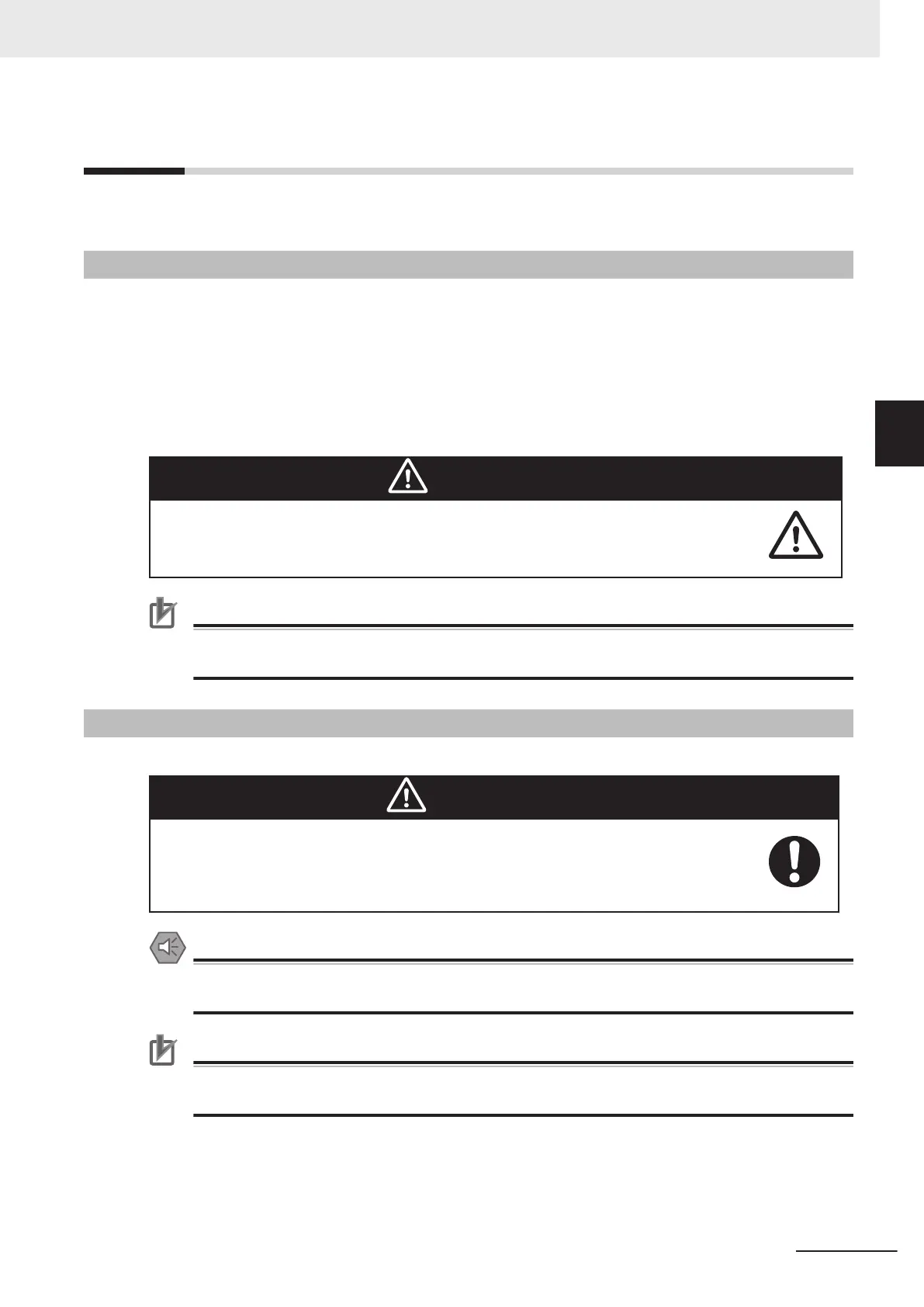3-2
Mounting the Robot
Use the information in the following sections to mount the robot.
3-2-1
Robot Mounting Surface
The following considerations must be made when preparing a robot mounting surface.
• It must be smooth and flat.
• It must be rigid enough to prevent vibration and flexing that is caused by reactionary forces during
fast robot motion.
• It must be designed to support the weight of the robot with payload.
• Table-mounted robots must be placed on a level, horizontal surface.
• Wall-mounted robots must be fastened to a 90° vertical surface.
WARNING
If a robot is mounted to a surface with inadequate stiffness, damage to the z-axis quill
or other mechanical components can result from excessive oscillation during opera-
tion.
Precautions for Correct Use
It is recommended to use a properly secured, 18 mm (minimum) thick steel plate with a maxi-
mum surface roughness of 25 μm as a robot mounting surface.
3-2-2
Mounting Procedure
Use the following procedure to mount the robot.
WARNING
• Always use proper lifting technique when lifting the robot. Failure to comply could
result in the robot falling and causing either personnel injury or equipment damage.
• The robot's center of mass can cause the robot to fall over if the robot is not proper-
ly secured with the mounting bolts.
Precautions for Safe Use
The robot can be lifted by hand. Only use the base and inner link when lifting the robot. Never
maneuver the robot using the quill or flyover assemblies.
Precautions for Correct Use
The mounting surface should be clean and prepared according to the information provided in
3-2-1 Robot Mounting Surface on page 3-3 before attempting to mount the robot.
Before beginning the mounting procedure, have the following tools and resources available. Prepare
the mounting holes before beginning the mounting procedure.
• Prepare the mounting holes.
• A torque wrench for proper tightening of the mounting bolts.
3 Installation
3-3
i4L Robots User's Manual (I658)
3-2 Mounting the Robot
3
3-2-1 Robot Mounting Surface
